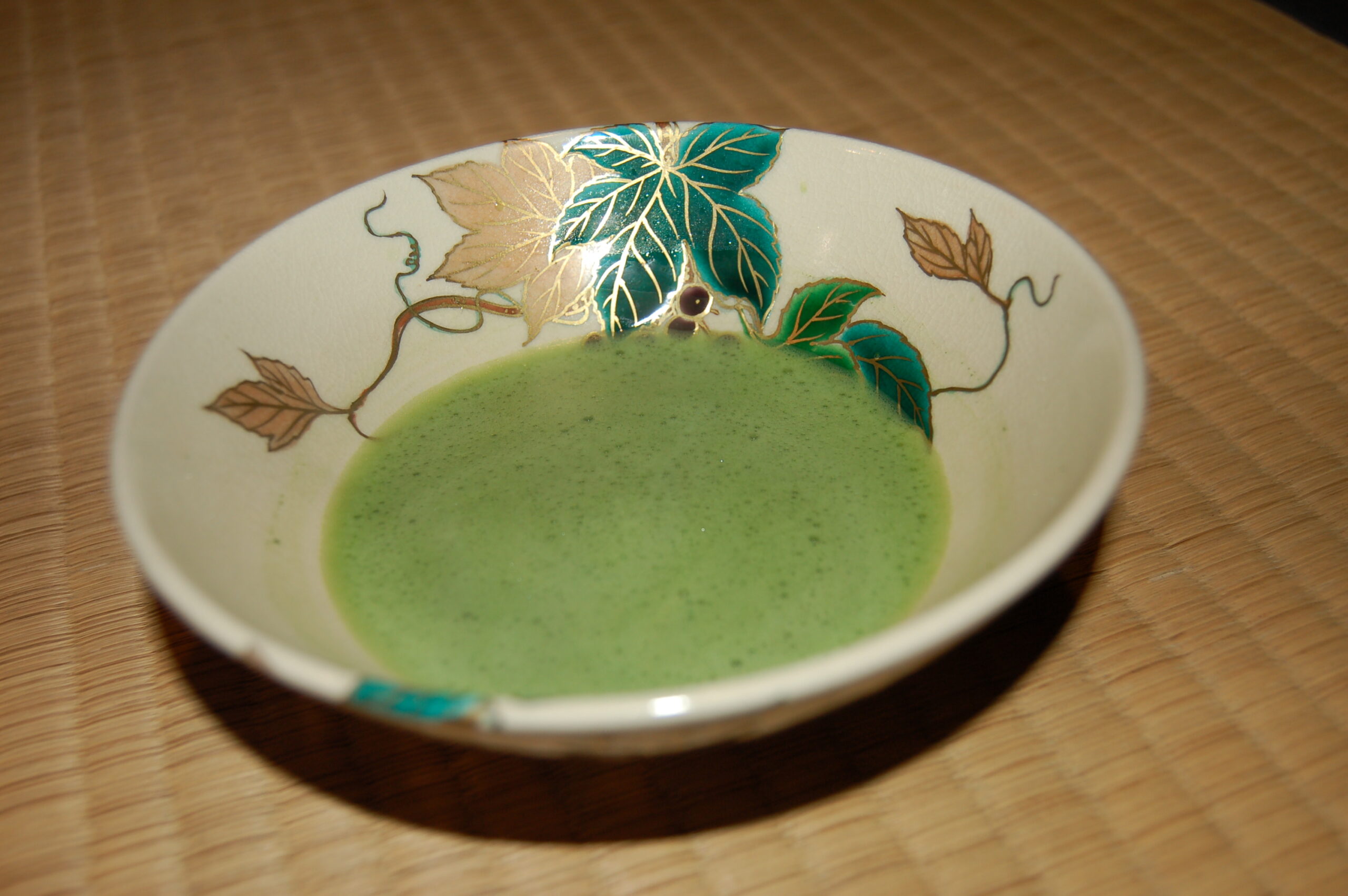 | Usucha or thin tea It is the most common way to drink matcha and it is whisked into a fine foam on top. The host makes conversation with each guest while preparing each bowl of tea. |
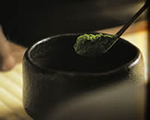 | Koicha or thick tea The host puts the tea powder for the number of guests (about 3 scoopes of good quality tea powder per person) into the tea bowl, and blends the thick tea with the tea whisk. The flavor becomes stronger, so the tea leaves need to be high quality with a refined fragrance and mellow taste for thick tea. |
 | Higashi or delicate sweets Higashi is served with usucha (thin green tea). These sweets are usually made from traditional Japanese sugar called Wasanbon. Some are also made from Japanese agar jelly and starch syrup. |
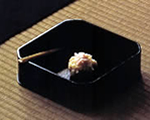 | Omogashi or soft sweets The main soft sweet or main confection is conventionally served before drinking a koicha. This is because the bitterness of the tea following the sweetness of the confection enhances the tasty of the tea. |
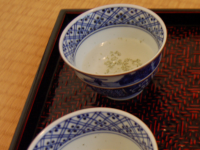 | Simple hot or cold water in the waiting room The guests arrive at the tea house and enter the room called “Machiai”. According to the season, simple hot or cold water is served. |
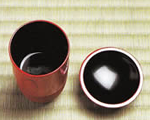 | Kosuimono Kosuimono is a small clear soup which is also called “hashiarai”. This means to purify chopsticks or mouth after eating side dishes with strong smells like fish. The lid is used to put food on it. |
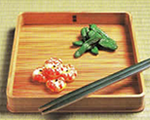 | Hassun The host brings in a square tray which contains food from “sea” and from “land”, together with a metal sake pourer. |
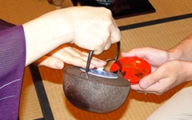 | Japanese Sake The host pours cups of the sake for the guest as a matter of courtesy or ceremony and enjoyment. You are not obligated to drink if you do not want |
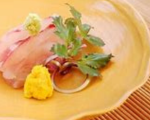 | Mukouduke Mukouzuke as an appetizer is served and placed behid the rice and soup. We often use seasonal vegetables, seafood, and other ingredients and prepare them in a way that makes the most of the ingredients to create a sense of the season. |
 | Mukouduke, Rice, Miso soup First set menu served Seasonal ingredients add colour to the rice. |
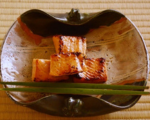 | Yakimono or Grilled one Fish is mainly used for grilled dishes, and in all of these dishes, both vegetables and fish/fowl are the most flavorful at the time of the year, In all of these dishes, vegetables, fish, and poultry are served with what is in season. |
 | Azukebachi or side meal The name comes from the meaning of “a dish to be left with the guest.” It is served in a bowl for a number of people, with chopsticks attached, to be passed around and left with the guest. |
A or AL course
 |
B course
 |
 |
C course
 |
 |
D course
 |
 |
E course
 |
 |
 |
 |
F course
 |
 |
 |
 |
 |